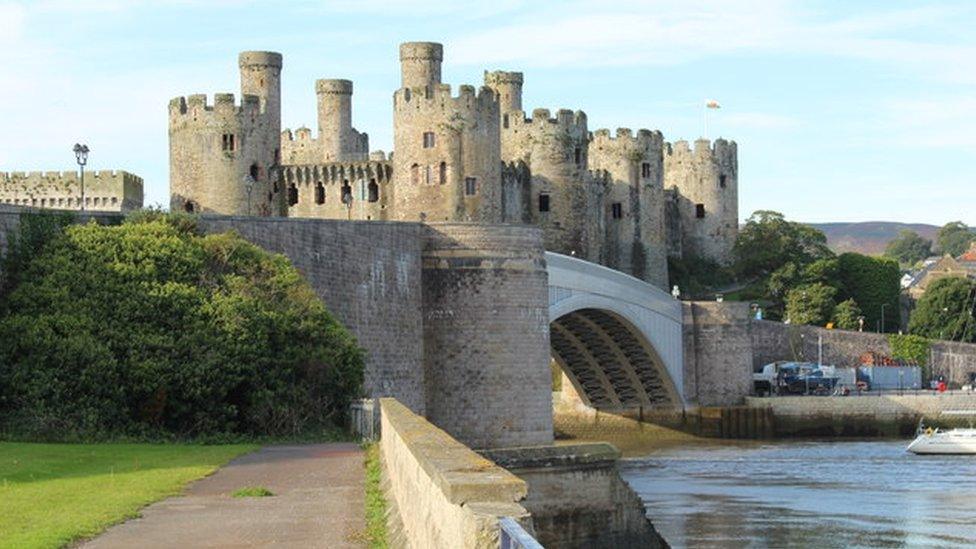Chepstow Castle gates 'oldest in Europe'
- Published
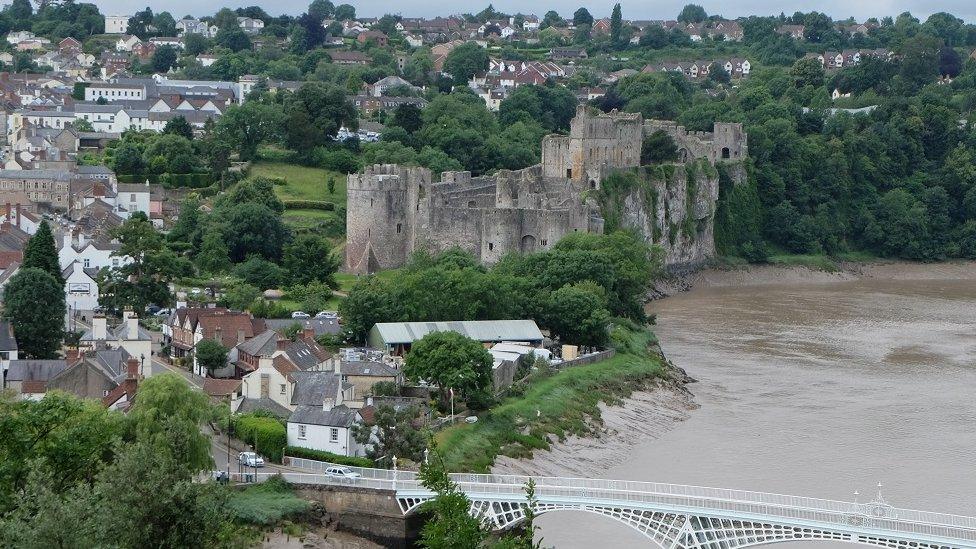
Chepstow is home to Britain's first stone-built castle
There has been much talk in recent weeks of the proposed renaming of the newest gateway into Wales - the Second Severn Crossing.
But just along the coast, at the confluence of the Severn and Wye, you can find not only the oldest gateway into Wales, but the oldest of its kind anywhere in Europe.
Chepstow is famed for being Britain's first stone-built castle. It was started months after the Battle of Hastings, and intended to be a statement of Norman power as much as a fortification.
Yet this stone castle was only made truly impregnable about a century later, with the addition of its wooden doors.
Measuring 8ft 5in (2.5m) wide by 11ft 7in (3.5m) tall, for close on a millennium the gates saw off all-comers, from marauding Welsh princes to Oliver Cromwell's New Model Army.
They were originally thought to have dated from around 1245, placing them in the heart of the Norman castle-building spree.
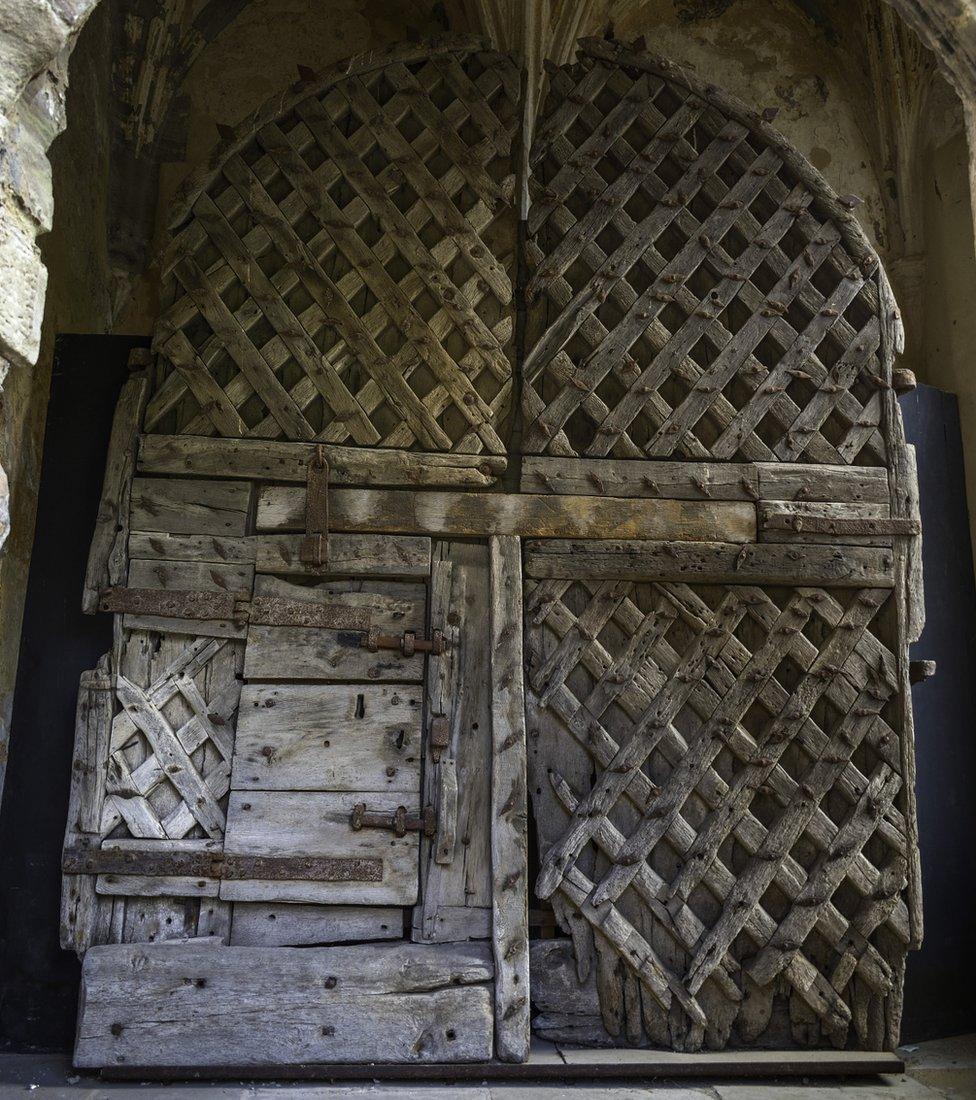
The gates have been moved inside the castle to protect them from damage
But dendrochronological analysis commissioned by Cadw, the Welsh Government's historic environment service, revealed they were in fact hung no later than 1190, making them the earliest known surviving castle doors in Europe.
Microscopic holes drilled into 14 different timbers also showed that they were constructed from a mixture of seasoned and green oak, allowing them to flex and bend both when under attack and through climatic variations.
Local historian John Burrows believes the construction of the doors was ahead of its time.
"The oak planks used are significant as this is one of the earliest examples we can find of oak being sawn rather than using the traditional method of cleaving the wood with axes and wedges," he said.
"The latticework, which strengthens them from the rear, is also thought to be the first use of its kind of mortise and tenon joints in a castle door.
"Held together with iron pins and clad with iron to make them resistant to fire, they were not only technologically advanced, but their appearance must have struck terror into any attackers."
The 1190 date means the doors would have been commissioned while the castle was under the stewardship of Sir William Marshal, Earl of Pembroke (1146 or 1147 to 14 May 1219).
According to Mr Burrows, this could explain why their creators went to such technological lengths.
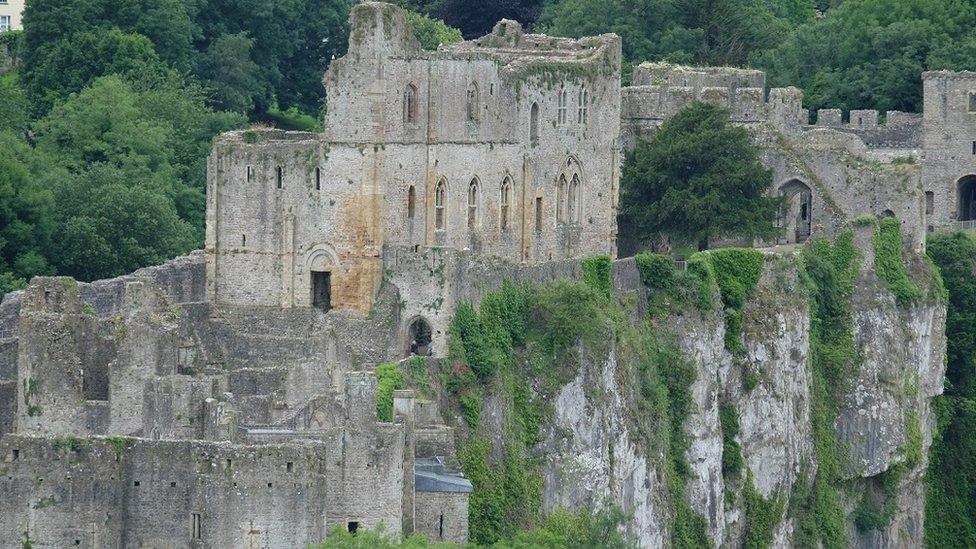
"Sir William had an extraordinary life, living to the almost unheard-of age of 72 and rising from a landless younger son to become one of the most important men in England, serving five different kings.
"He trained as a tournament jouster in the household of William de Tancarville, and was described as the greatest ever knight errant.
"In later life he helped negotiate Magna Carta and twice served as royal protector, while Richard the Lionheart was on crusade, and again after the death of King John.
"The design of the doors is a testament both to the status of Sir William by 1190, and the strategic importance of Chepstow in imposing royal power in Wales."
The doors were never breached, and when Chepstow did finally fall, during the 1648 siege as part of the English civil war, the parliamentarian army chose to blow up the side wall of the castle to gain entry rather than attack the seemingly impregnable front entrance.
Yet those hoping to see the doors today will have to venture a little further than the gatehouse.
Perhaps a little unusually for a structure which stood unconquered for almost 800 years, in 1963 they were moved inside to protect them from damage by weather and visitors.
The exact replicas which now hang at the front of the castle were made by apprentices at the army apprentice school, Chepstow, in March 1964.
- Published24 February 2018
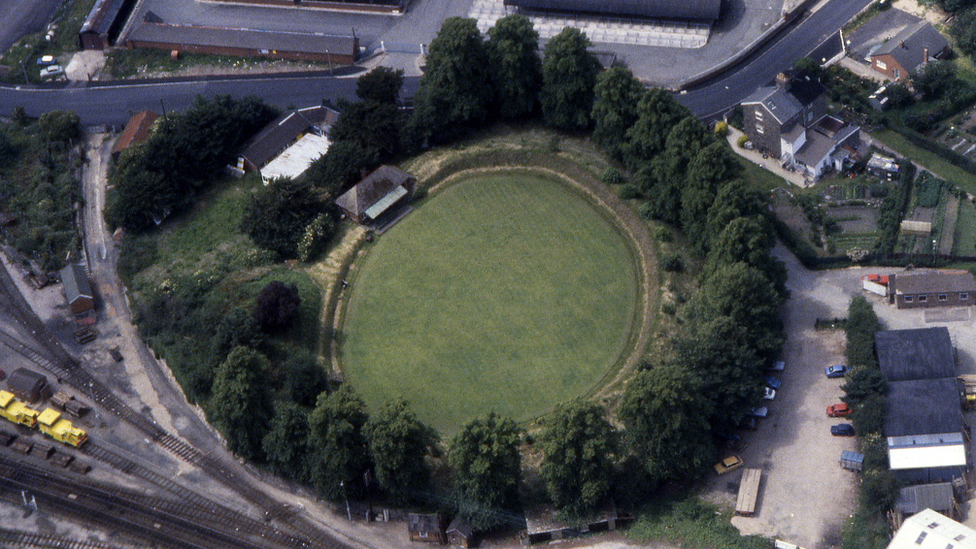
- Published1 April 2017

- Published29 December 2017
